Quiz, Shalom Bombay, The Guru & the CEO, Films & Food, Indian-Americans
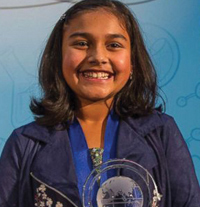
WHO, WHAT, WHERE, WHEN, & WHY
1. Gitanjali Rao, an 11-year-old from Colorado, is the 2017 winner of the Discovery 3M Young
Scientist Challenge. Students in grades 5 through 8 are eligible. Gitanjali, with a mentor’s help, is
working on a superfast sensor (Tethys) that detects lead in water. What’s the prize worth?
(A) $10,000 (B) $25,000 (C) $100,000 (D) $1 million
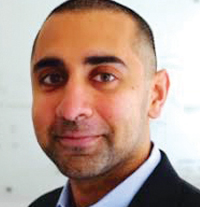
2. This digital currency baffles many people, but Balaji Srinivasan hopes to change that. He’s
a cofounder of 21.co, which built the technology for micropayments based on it. He has two M.S.
degrees and a Ph.D. from Stanford, where he teaches courses. What’s the digital currency called?
(A) Realcoin (B) Goldcoin (C) Silvercoin (D) Bitcoin
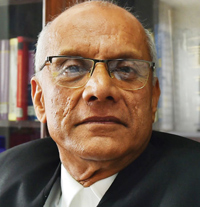
3. Colin Gonsalves, an Indian human rights lawyer, shares the 2017 Right Livelihood Award
with three others. Gonsalves was cited for his novel use of public interest litigation to fight for the
rights of marginalized communities. This ‘Alternative Nobel Prize’ is presented where?
(A) London (B) Stockholm (C) New York (D) Paris
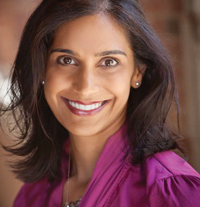
4. Asha Rangappa, a senior lecturer at Yale University’s Jackson Institute of Global Affairs, was
an FBI special agent. She joined the New York division not long after 9/11and worked for the FBI till
2005. Now she’s also a legal and national security analyst, appearing on which channel?
(A) CNN (B) NBC (C) CBS (D) FOX
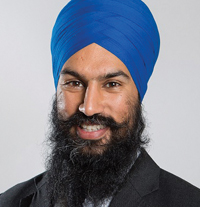
5. Starting out as a lawyer, Jagmeet Singh became an MPP (Member of Provincial Parliament) in
Canada. And now, in a breakthrough, this observant Sikh has become the leader of the New Democratic
Party, Canada’s third biggest party. Which province is he based in as the MPP?
(A) Québec (B) Alberta (C) Ontario (D) Manitoba
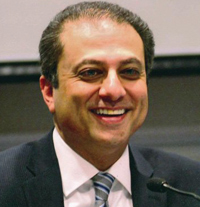
6. Preet Bharara has been busy since Trump fired him as U.S. Attorney for the Southern District
of New York. Among other things, he does a podcast called Stay Tuned with Preet. Given his media
skills, it’s no surprise that he’s a senior legal analyst. On which channel does he appear?
(A) FOX (B) CNBC (C) ABC (D) CNN
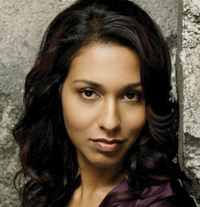
7. The first part of Star Trek: Discovery ends this month, but it will return for the second part in
January. The cast includes, as Trekkies already know, Rekha Sharma (as Commander Landry) and
Maulik Pancholy (as Chief Medical Officer Nambue). When did this series first air on TV?
(A) ’60s (B) ’70s (C) ’80s (D) ’90s
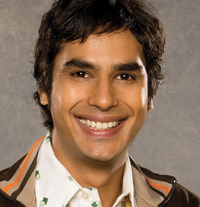
8. Kunal Nayyar, with $25 million earned from one show, is ranked number 4 on the “highest-paid TV actors 2017” list put out by Forbes. Jim Parsons, the highest-paid TV actor on the same
list, also appears in this popular sitcom, now in its eleventh season. What’s it called?
(A) Fresh Off the Boat (B) Modern Family (C) The Big Bang Theory (D) Silicon Valley
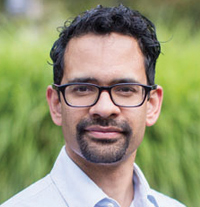
9. Sunil Amrith, a Harvard University historian who studies how migration influences the
social and cultural dynamics of nations in South and Southeast Asia, is one of the 24 MacArthur
Fellows in 2017. How many other South Asian Americans won this ‘genius’ award this year?
(A) None (B) One (C) Two (D) Three
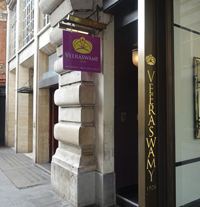
10. Veeraswamy, most likely the world’s oldest Indian restaurant, turned 90 last year. It was a
Westerner with an Indian connection—not anybody named Veeraswamy—who opened this iconic
restaurant in 1926. The ownership has changed over the decades. Where is it located?
(A) New York (B) London (C) Paris (D) Lisbon
[Answers are at the bottom of this page.]
<= <= <= <= <= <= <= <= <=
SHALOM BOMBAY: A FORGOTTEN STORY
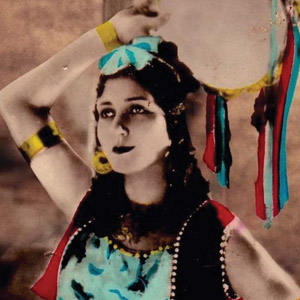
Veteran fans of Indian cinema may remember Nadira, known for her roles in hits like Julie and Pakeezah. Australian filmmaker Danny Ben-Moshe heard about her only in 2006, the year this Jewish actress (birth name: Florence Ezekiel) died in the city many still call Bombay. Fascinated, he began working on a documentary, Shalom Bollywood, which traces the legacy of Jews in Indian cinema. Turns out, in the early years, Anglo-Indians and Jewish Indians (Baghdadi, mostly) played an influential role in the country’s burgeoning film industry. Ruby Meyers (Sulochana) was perhaps the first superstar. Other actresses included Renee Smith (Sita Devi), Effie Hippolet (Indira Devi), Bonnie Bird (Lalita Devi), Beryl Claesen (Madhuri), Winnie Stewart (Manorama), Iris Gasper (Sabita Devi), and Rachel Sofaer (Arati Devi). Yes, Indian cinema had Jewish men, too—like David Abraham Cheulkar, an actor, and Ezra Mir, a notable director. Some of these actresses and actors were producers as well.
Another female star, Kenneth Robbins points out in Café Dessensus magazine, was Esther Victoria Abraham, better known as Pramila, the first Miss India. She belonged to a filmi family—Sophie (Romila), her sister, and Rose Musleah (Rose), her cousin, were also actresses—and the tradition continues with Pramila’s son, Haider Ali, an actor who co-wrote Jodha Akbar. Naqi Jahan, her daughter, became Miss India in 1967, exactly two decades after Pramila won the title. The identity of Azurie, Leela Chitnis, Patience Cooper, Ermeline, Rinku Jaiswal, Kitty Kelly, Kamlesh Kumari, and Sabita Devi, among other early Bollywood actresses, is still debated, Robbins notes. It’s no wonder that Ben-Moshe took over a decade to finish his documentary. It was finally screened last month in…yes, Bombay.
˄ΔᴧꙘ ˄ΔᴧꙘ ˄ΔᴧꙘ ˄ΔᴧꙘ
THE GURU AND THE CEO
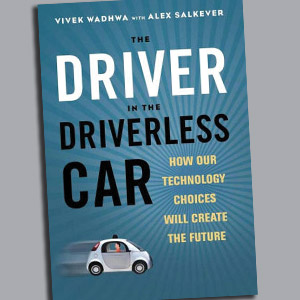
Well-known tech guru Vivek Wadhwa has long been gung-ho on the benefits of technology. His latest book, co-written with Alex Salkever, is titled The Driver in the Driverless Car (Berrett-Koehler). But Wadhwa, troubled by current trends, recently wrote to his followers, “We felt that technology was reducing our ability to choose and that the forces arrayed against the user to alter their behavior—the smartest Ph.Ds., the latest AI algorithms, the ability to personalize offerings down to the zip code and even the household—was an unfair arrangement.” So the authors are taking a closer, more balanced look in their next book, to be called Your Happiness Was Hacked. To repeat a well-worn saying, if we don’t master technology, we’ll be enslaved by it.
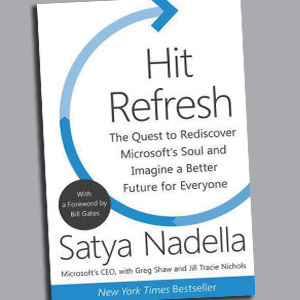
In his own way, Satya Nadella, the CEO of Microsoft, makes the same point in Hit Refresh (HarperCollins), showing how leadership can play a huge role in making sure that technological advances are responsible and for the benefit of all. “Nadella concludes by introducing an equation to restore digital trust, ethical design principles, and economic growth for everyone,” notes the Financial Times, which includes this book and The Driver in the Driverless Car in its longlist of Best Business Books in 2017. In his book, Wadhwa picks a Google self-driving car as his starting point and examines risks vs. rewards, equity, and autonomy vs. dependence. In Hit Refresh, Nadella, who has a disabled son, stresses the importance of empathy and reveals how his family, not to mention Bill and Melinda Gates, had a profound influence on his worldview. A longtime cricket fan, Nadella’s passion for the game is such that, as a youth in India, he wanted to be a professional player. Clearly, cricket’s loss was technology’s gain.
Fi Foo Fi Foo Fi Foo
CRAZY ABOUT FILMS AND FOOD
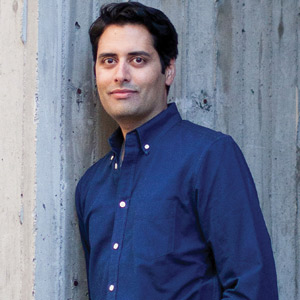
To share his twin interests, Sri Rao hit upon the neat idea of combining them in a book called Bollywood Kitchen (Houghton Mifflin Harcourt). It’s an appreciation of Indian culture as experienced by Rao, a screenwriter and filmmaker who grew up in the 1960s and ’70s in small-town America, where his parents were some of the earliest immigrants from India. “Were it not for the elaborate dinners my mom served every evening precisely at 6:00, I would know nothing about the complex flavors that fed generations of my ancestors,” he writes. “And were it not for the invention of the VCR, which brought with it a nightly ritual of watching Bollywood movies after dinner, I would be a stranger to the stories, language, and music of my parents’ home.”
One evening’s menu, to give an example from the book, features recipes for Sri’s signature chicken, cucumber raita, string beans with peanuts, and chocolate chai affogato. It’s paired with the Sri Devi film English Vinglish, set mostly in the U.S. His film review appears under ‘The Dish,’ and if you’re in the mood for more, he offers (under ‘Taste This’) these immigrant dramas: The Namesake, Swades, and My Name is Khan. You’ll find the cast under ‘Ingredients.’ Some may find this too cute, but if you’re game, Rao will take you on an enjoyable tour of similar pairings. He treasures home cooking, family recipes refined over time, and improvised dishes made with whatever ingredients are available. Restaurant food is not for him. Even if his decision to leave out regional cinema and stick to the ’90s and after is understandable, one wishes he had picked more indie films. That would have made his book even more delectable.
& & & & & & & & & &
SURVEY OF INDIAN-AMERICANS
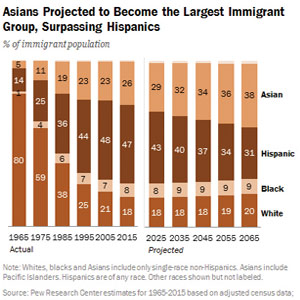
In the first 15 years of this century, according to a recent Pew Research Center report, the Asian population grew the fastest in the U.S. among all major racial and ethnic groups. It rose by 72 percent, going from 11.9 million at the turn of the century to 20.4 million in 2015. Two years later, it’s larger. How did Indian-Americans fare? While neither the fastest nor the slowest growing segment, their population increased at a steady clip, changing from 1.9 million in 2000 to over 3.9 million in 2015. Now around 4 million, Indian-Americans form the second largest Asian group (after the Chinese). While immigrants in certain subgroups are doing well, others—notably, recent refugees—remain on the lower rungs in socioeconomic terms.
The foreign-born Indian-American population (69 percent) outstrips the U.S.-born segment (31 percent). Roughly half the foreign-born Indians are U.S. citizens and about 77 percent are married (for all Indian-Americans, it’s 59 percent). The median household income for Indian-Americans, at $100,000, is the highest among all groups, with Filipinos coming in second at $80,000. U.S.-born and foreign-born Indian-Americans seem equally accomplished in their educational attainments. For postgraduate degrees, it’s 41 percent (U.S.-born) and 40 percent foreign-born). For all Americans, it’s 11 percent, and for all Asian Americans, it’s 21 percent. For bachelor’s degrees, too, U.S.-born (33 percent) and foreign-born (32 percent) Indian- Americans are evenly split.
>>>>>>>>>>>>>>
[Answers to the quiz: 1 = (B). 2 = (D). 3= (B). 4 = (A). 5 = (C). 6 = (D). 7 = (A). 8 = (C). 9 = (A). 10 = (B).]
Enjoyed reading Khabar magazine? Subscribe to Khabar and get a full digital copy of this Indian-American community magazine.
blog comments powered by Disqus










